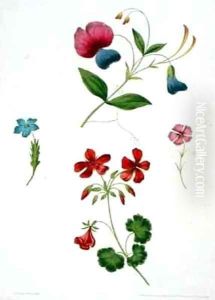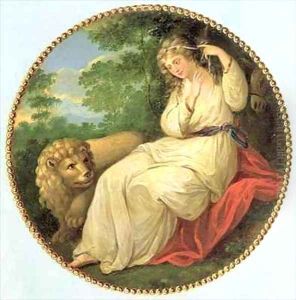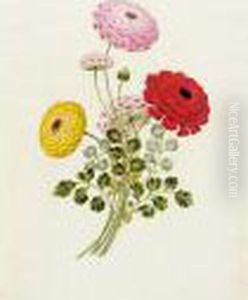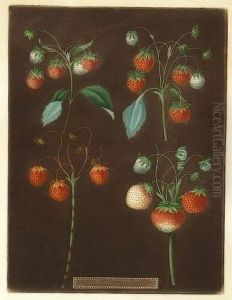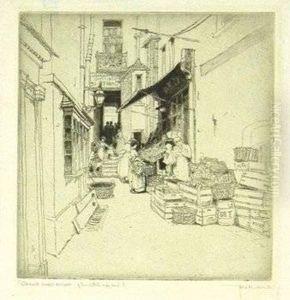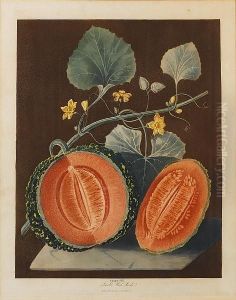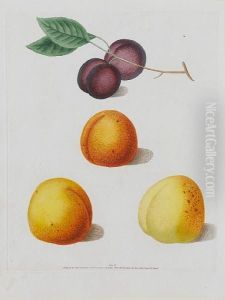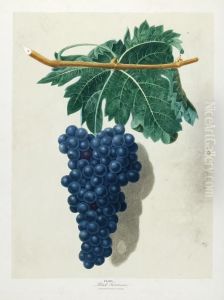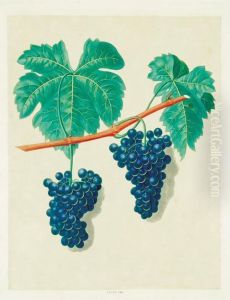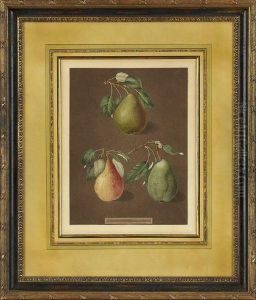George Brookshaw Paintings
George Brookshaw, a British artist known primarily for his detailed paintings and prints of fruit and flowers, was born around 1751. Initially, Brookshaw began his career as a cabinetmaker and was recognized for his high-quality furniture with marquetry inlays that often included floral designs. His work in this field gained him notable patrons, including the Prince of Wales.
Around the turn of the 19th century, Brookshaw largely abandoned his work as a cabinetmaker to focus on botanical illustration. His shift to painting and engraving was marked by the publication of 'Pomona Britannica,' a fine series of aquatint engravings of fruits cultivated in England, presented in a luxuriously large folio format. The work was first published in parts between 1804 and 1812 and is considered his masterpiece. It was an ambitious project, showcasing the varieties of fruit available in British gardens and orchards at the time, with an emphasis on accuracy and aesthetic appeal.
Brookshaw also produced 'Groups of Flowers,' which was published in 1817. This work focused on flowers and was similar in style and quality to 'Pomona Britannica.' His illustrations are characterized by their vibrant colors and high level of detail, serving both artistic and educational purposes.
Despite his significant contributions to botanical art, little is known about Brookshaw's personal life, and he disappeared from public view for a time. His later years are somewhat obscure, and records suggest that he died around 1823. Today, George Brookshaw's work is recognized for its contribution to the art of botanical illustration and is highly sought after by collectors. His prints and books are considered important references for botanical artists, horticulturists, and historians.
